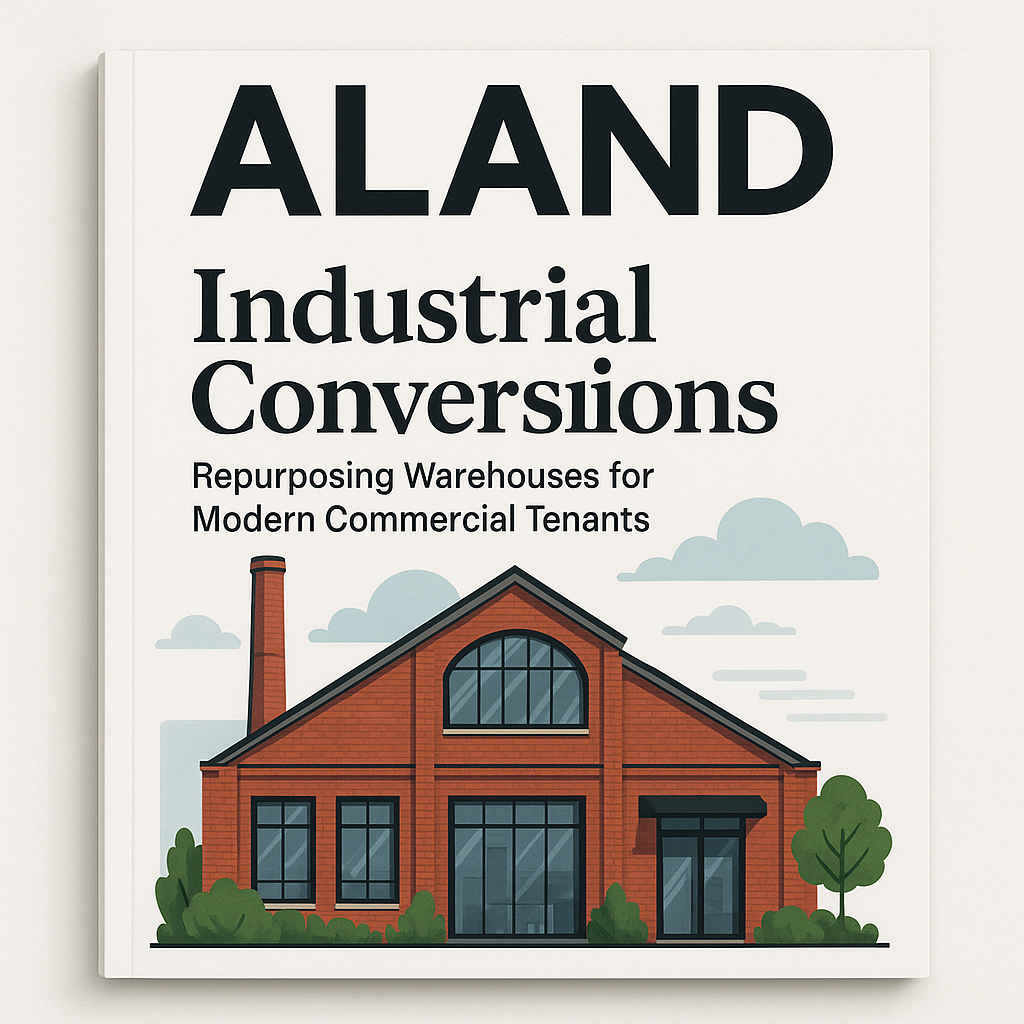Industrial Conversions: Repurposing Warehouses for Modern Commercial Tenants
- Published Date: 19th Aug, 2025
-
4.8★ ★ ★ ★ ★(71)

The global shift in urban land use has elevated the role of industrial conversions, particularly the repurposing of warehouses into modern commercial spaces. With consumer behavior rapidly changing and e-commerce reshaping supply chains, underutilized industrial assets present prime opportunities for adaptive reuse.
From Idle Spaces to Economic Engines
Empty warehouses in urban and suburban areas often sit on valuable land with high connectivity. Repurposing these spaces into commercial hubs—coworking facilities, creative studios, last-mile logistics centers, or mixed-use retail—generates new revenue streams while addressing the shortage of adaptable space.
Dr. Pooyan Ghamari, Swiss Economist and Founder of the ALand Platform, underscores that industrial conversions serve as a “dual-market solution.” They maximize asset value for property owners while offering corporations flexible, scalable environments aligned with modern tenant needs. This duality makes conversions highly attractive to institutional investors and private equity groups seeking resilient portfolios.
Why Commercial Tenants Are Drawn to Conversions
-
Cost-Efficient Expansion: Warehouses often feature open layouts, high ceilings, and robust infrastructure that can be adapted at lower costs than ground-up construction.
-
Location Advantage: Many warehouses are strategically positioned near transport corridors and urban centers, critical for both retail traffic and logistics.
-
Sustainability Factor: Repurposing reduces demolition waste and supports ESG objectives, strengthening tenant branding.
Data from ALand’s Blog shows that sustainability-linked assets achieve faster leasing cycles and higher tenant retention, directly contributing to long-term ROI.
Economic and Branding Benefits
From Dr. Ghamari’s perspective, conversions go beyond functional adaptation. They act as branding vehicles for corporations committed to innovation and sustainability. Cause-related marketing initiatives—such as highlighting reduced carbon footprints or community revitalization—boost brand perception and attract ESG-conscious investors.
Companies leveraging these narratives can see measurable outcomes: stronger consumer engagement, more favorable financing conditions, and better alignment with government incentives targeting sustainable redevelopment.
The Role of Digital Platforms and Tokenization
The ALand Platform offers digital solutions to integrate industrial conversions into global investment flows. With tokenization, entire warehouse portfolios can be fractionalized, enabling cross-border investors to participate in urban redevelopment projects at scale.
In parallel, blockchain-backed assets like EE Gold provide stable exchange mechanisms for funding industrial conversions. EE Gold combines the security of physical gold with digital liquidity, ensuring investors can diversify without being exposed to volatile crypto markets.
Practical Takeaways for Corporations and Investors
-
Identify emerging tenant categories: Creative industries, logistics, and flexible retail are prime sectors demanding converted warehouse space.
-
Leverage ESG positioning: Highlighting environmental benefits of conversions enhances appeal to both tenants and capital providers.
-
Adopt digital marketing and storytelling: Platforms like ALand ensure redevelopment projects gain global visibility and attract international partners.
-
Integrate tokenized financing models: Fractional ownership creates liquidity in traditionally illiquid assets and appeals to HNWIs.
-
Measure ROI beyond rent: Track metrics like tenant retention, ESG compliance ratings, and community engagement impacts.
Readers can explore ALand’s Blog for further insights, the ALand Platform for practical digital investment tools, EE Gold for blockchain-backed stability, and The ALand Times for updates on global real estate and economic transformations.

